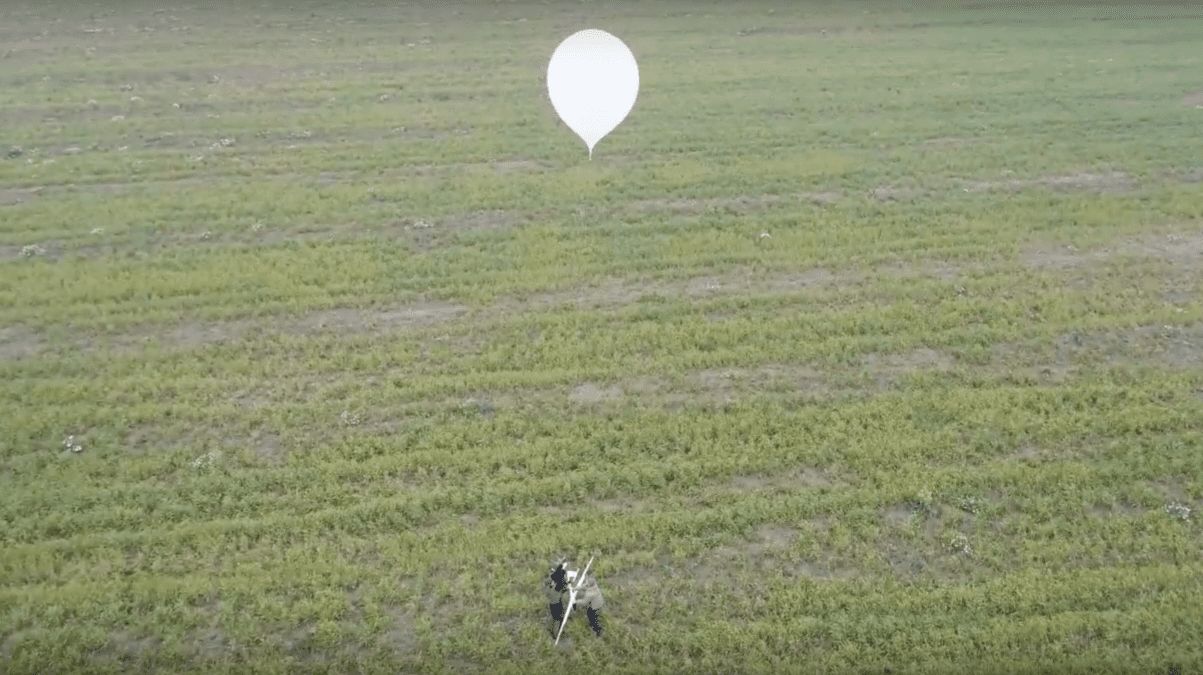
The HiDRON being released for its first flight. Screenshot courtesy of UAVOS
The high-altitude HiDRON unmanned glider by UAVOS and Stratodynamics Aviation completed its first test flight earlier this month, UAVOS revealed Thursday.
The HiDRON’s first flight lasted 90 minutes within an undisclosed location, and approached an altitude of 20,000 feet. The HiDRON is a balloon-launched stratospheric aircraft designed for collecting atmospheric data, capable of autonomous and soaring flight modes. It has an 11-foot wingspan and a 10-lb maximum payload, though UAVOS said there are plans to increase payload weight with further development. There are also plans to increase vertical ascent speeds for the next flight while keeping descent speeds low.
This initial flight included testing the stability of the communication commands of the primary radio link and backup Iridium satellite system, the balloon release system, stabilization and control of the aircraft after balloon release, and monitoring aircraft icing on the HiDRON’s controls.
“In general, the first test flight of the HiDRON was successful,” said UAVOS Lead Developer Aliaksei Stratsilatau. “All systems worked in a regular operation mode. By the decision of the development team, the unmanned aircraft is admitted to the next flight at an altitude of 25 to 30 km with integrated equipment for weather measurement: an ozonesonde with pressure, temperature and humidity sensors.”
Collected data, such as GPS information and wind speed, will also be integrated with autopilot sensors for the next flight, according to Stratsilatau.

Monitoring the HiDRON during its test flight. Screenshot courtesy of UAVOS
“We are pleased with the flight test results and the HiDRON’s agility to return home from 12 km away and a six-km altitude,” said Gary Pundsack, Stratodynamics CEO in a statement. “The HiDRON provides a new dynamic method for measuring and evaluating atmospheric phenomena at various altitudes in a variety of geographical locations.”
The HiDRON’s next test flight is scheduled for the end of November.
Update: AVI had previously been told that the flight took place in Switzerland but later found out that was not the case. The article has been updated to reflect that.